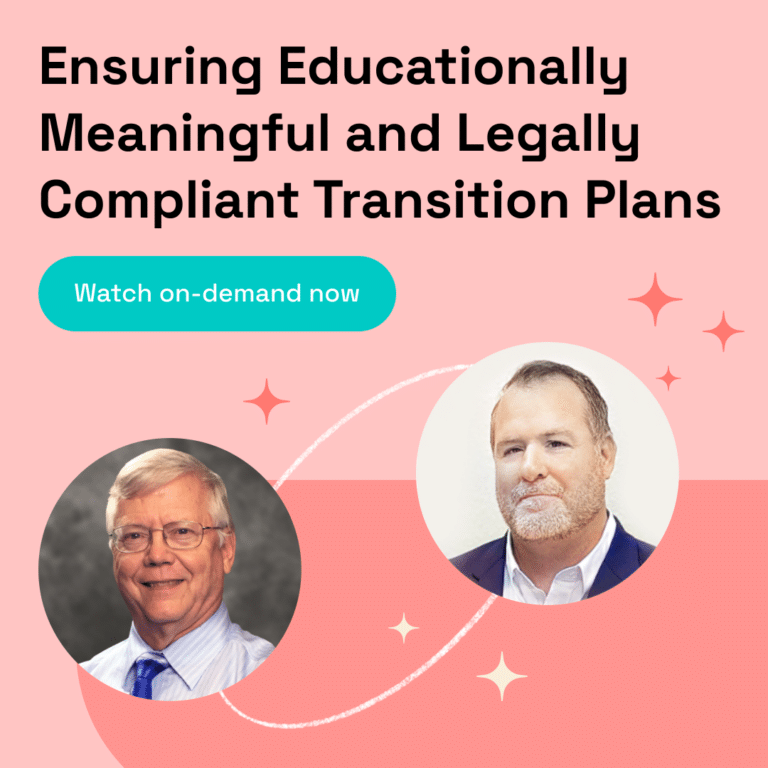
How Can We Aid the Transition of Students with Autism To Employment?


Autism, also known as autism spectrum disorder (ASD), is a condition which is characterized by a range of challenges in social communication and behavior. As the number of ASD diagnoses in children increases, so does educational leaders’ responsibility to ensure that special education institutions are securing the opportunities school students need to thrive in adulthood, particularly in the world of work.
In this article, we discuss the intersection between autism and transitions, summarizing the main challenges faced by students with autism today as they transition into the workforce, offering insights and practical advice to educators and organizational leaders dedicated to increasing access to services for individuals with autism.
Key takeaways
The transition from high school to the workplace can be a daunting prospect for any student. Finding and maintaining employment presents a unique set of obstacles for students with autism, however: difficulty communicating with other people makes it harder to perform well at job interviews, while workplace environments that are noisy or busy can pose challenges for individuals on the spectrum who are highly sensitive to particular sounds or other people’s touch.
The necessity to adequately prepare special education students for this challenging transition is addressed by the Individuals with Disabilities Education Act (IDEA), which mandates that transition experiences should “facilitate the child’s movement from school to post-school activities”, and thus promote students’ successful entry into adult settings, chief among these being employment.
Special educators are trained to develop and provide multiple work-based learning experiences so that students can explore different professional roles and gain a better understanding of their workplace preferences—whether working inside or outside, in a quiet or noisy environment, in a team or independently. Even so, the knowledge and skills students acquire as part of their transition curriculum in preparation for the working world do not necessarily materialize into a paid job after graduation, with many of these students remaining unemployed.
According to research carried out by Roux et al. (2013), postsecondary employment outcomes for young adults with autism receiving special education are worse than those of people with other disabilities. These findings suggest that there is a critical gap in our education system between autism and other disabilities in relation to transition, revealing a general failure to prepare students with ASD on their journey to becoming successful adults.
Identify the blocks in your way and markedly improve your school’s transition plan with these three quick wins.

Given the significance of securing employment as a key component of passage into adulthood—not to mention a key indicator of societal well-being—one possible improvement that can be made to the way in which schools and districts approach autism and transitions is embedding employment in transition curricula, requiring students to line up a job while still in school with a view to starting work as soon as they graduate.
A study conducted by Rabren et al. (2002), which examined the employment status of 1,393 special education students in Alabama over the course of a year after leaving high school, supports the claim that every graduate should leave high school with a paid job in order to have a foot in the door of their desired profession. It concluded that students who had already secured a job by the time they left high school were five times more likely to still be employed a year later. These findings were presented almost two decades ago, and yet it seems that we are still far from achieving the desired outcome: successful employment after exiting the K-12 public education system.
For students diagnosed on the autism spectrum, it is therefore of the utmost importance that they leave not only with a diploma attesting to their ability to work and the necessary transferrable skills to apply in their workplace, but with tangible opportunities that can set them on a successful career path for years to come.

Students with autism encounter obstacles like communication difficulties and sensitivity to noise, impacting their ability to perform in job interviews and workplace environments.
IDEA mandates transition experiences to facilitate movement from school to post-school activities, aiming to promote successful entry into employment for students with autism.
By embedding employment in transition curricula and ensuring students secure a job before graduating, schools can improve transition outcomes for students with autism.
The journey of a thousand miles, as Chinese philosophical wisdom would have it, begins with a single step. In the context of high-school students with autism and transitions, the journey of adulthood begins with a single job.
Ori Learning’s Transition Curriculum is designed with students with a range of disabilities in mind, including students with ASD. Our platform includes built-in accommodations and integrates UDL principles to facilitate tailoring the curriculum’s delivery to individual student needs.
As part of the transition curriculum, students can explore the various career clusters and take interest inventories to identify their potential career paths. They will also learn, practice and apply new skills for researching employment opportunities, building their resume, applying for a job and preparing for the interview.
Get in touch today to discover how our comprehensive curriculum can empower educators at your school or district to effectively teach transition skills to middle and high-school students today and set them up for success tomorrow.

